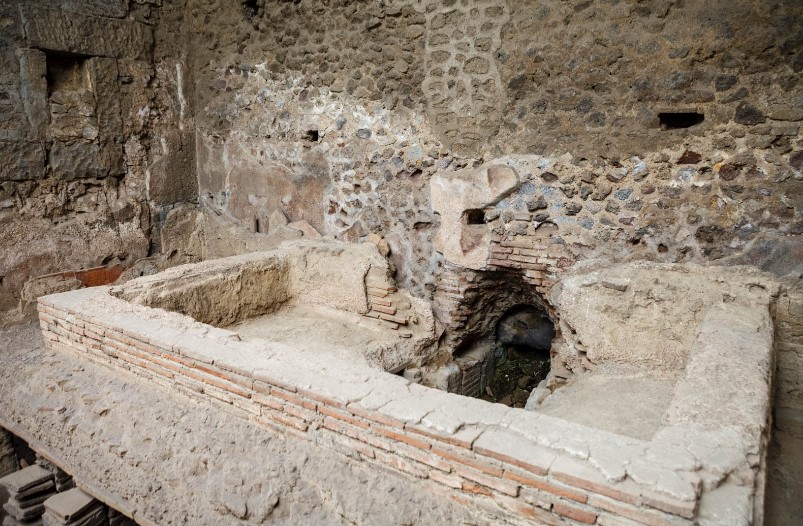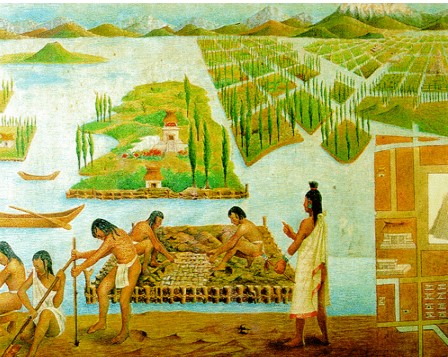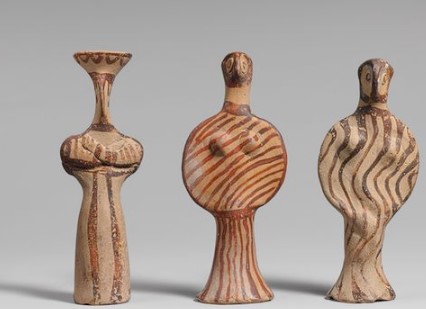When asked which animal was the first to be domesticated most people answer with ‘the dog’. Certainly, the dog has become well-known as a hard worker, trainable and loyal. However, it is lesser known that the Bee was also domesticated many thousands of years ago. Humans have kept honey bees, Apis mellifera, in artificial hives for over 7000 years. In this article I will be looking more closely at ‘Sustainability in the Ancient World – and – the case of Bees’.
Introduction
What do we know of Sustainability in the ancient world? As we understand it today, the concept of sustainability did not exist in the ancient world. The term “sustainability” itself and the systematic, global approach to environmental conservation are relatively recent developments.
However, there are instances of ancient societies practising principles that align with sustainability to some extent. Indigenous cultures often had, and still have, a deep connection with nature and a keen understanding of ecosystems. They tended to manage resources in a way that ensured long-term availability. Native American tribes, for instance, had practices that involved respecting the balance of nature, not over-harvesting, and using resources wisely. They integrated ecological awareness into their belief systems. Nature was, and still is, seen as sacred, and rituals were performed to honour and maintain the balance of the natural world.
In ancient Egypt, for example, waste removal and reduction practices were influenced by the geographical and environmental conditions of the Nile River valley. The Egyptians had a complex society with sophisticated agricultural practices. The Nile River played a crucial role in the lives of ancient Egyptians, not only water management systems, which helped ensure consistent and sustainable irrigation but also served as a means of waste disposal. People living along the riverbanks would often discard their waste directly into the Nile, relying on the river’s flow to carry away the waste.
(The Stabian baths in Pompeii included heating tiles that fit under a platform to spread heat throughout the baths – a precursor to today’s in-floor heating)
In some ancient cities, such as the Greek city-states, waste was often disposed of outside the city walls. Residents would throw their waste into designated areas, which could include ravines or pits located beyond the city limits. Waste management was also practised to some extent in ancient Rome. They had a rudimentary system for waste removal, and they recycled materials such as glass and metal. Archaeological evidence suggests that they reused certain materials, such as broken pottery and glass. However, recycling was driven more by economic considerations than environmental concerns.
Of course, the Romans are renowned for their engineering skills, and one of their significant achievements was the construction of the Cloaca Maxima, a massive sewer system. It was built primarily to drain the marshes in the Roman Forum but was later expanded to serve as a sewage system for the entire city.
Building Techniques, Agricultural Practice and Food Production
Ancient civilizations, like the Romans, Greeks, and Egyptians, often used durable and locally sourced materials for construction. The choice of materials was sometimes influenced by their availability and sustainability.
But sustainability, as a modern concept, was not explicitly recognized or practiced in the same way it is today. However, some ancient societies did exhibit practices that align with certain aspects of sustainable agriculture and food production in the ancient world.
(Mayans: Plant cultivation consisted in the area which is current day Mexico, Guatemala and Honduras and surrounding regions. One of the main crops was maize. Irrigation began to be used and populations came around religious centres where pyramids and temples were built.)
Many ancient cultures practised sustainable agriculture by rotating crops, allowing fields to lie fallow, and using natural fertilizers such as manure. The Mayans, for example, developed advanced agricultural techniques such as terracing and raised fields to manage water and soil efficiently. In Mesopotamia and ancient Rome, crop rotation was practiced. By alternating crops in a particular field over time, they helped maintain soil fertility and reduced the depletion of nutrients. This practice also had ecological benefits, as diverse crops could support a more balanced ecosystem.
Ancient societies largely relied on local and seasonal agriculture. They grew crops that were well-suited to their specific climates and environments. This reduced the need for extensive transportation of goods and supported the natural rhythm of the land.
As was mentioned earlier, ancient farmers relied on local knowledge and traditional agricultural practices that were adapted to their specific regions. This indigenous wisdom often involved an intimate understanding of the land, climate, and ecosystems.
There are however instances of overexploitation, soil degradation, and deforestation and are documented in various ancient societies, indicating that sustainability was not universally achieved.
In the ancient world, bees played a significant role in sustainability, contributing to agriculture, medicine, and cultural practices.
The Case of Bees
Bees and their role in pollination and honey production were significant in various ancient cultures. Here are some aspects related to bees in the ancient world:
Ancient Egyptians practised beekeeping as early as 2400 BCE. Scenes depicting beekeeping and the collection of honey can be found in ancient Egyptian art and hieroglyphs. Beekeeping was likely motivated by the value of honey and beeswax, which were used in various aspects of daily life
Bees … Symbolism and Mythology
The Bee, found in Ancient Near East and Aegean cultures, was believed to be the sacred insect that bridged the natural world to the underworld. Appearing in tomb decorations, Mycenaean tholos tombs were even shaped like beehives.
Bee motifs are also seen in Mayan cultures, an example being the Ah-Muzen-Cab, the Bee God, found in Mayan ruins, likely designating honey-producing cities (who prized honey as the food of the gods).
The bee was an emblem of Potnia, the Minoan-Mycenaean “Mistress”, also referred to as “The Pure Mother Bee”. Her priestesses received the name of “Melissa” (“bee”).
Priestesses worshipping Artemis and Demeter were called “Bees”.
Artemis of Ephesus: This Artemis is known as the “Queen Bee Goddess”. An ancient goddess associated with knives, swords, axes, and bees. Her image is that of a female body covered with rounded mounds which are thought by some to be female breasts and by others as beehives, or even bull’s testicles. I personally think they are pods which bees use to incubate eggs.
At Eryx, the high priestess of Aphrodite was called Melissa (“Bee”). One of the attributes was a golden honeycomb. Bees have been a symbol of rebirth since the Neolithic Age. Melissa enabled souls to be born again. Also in Ephesus, the bee was one of Artemis’ animals; bees are pictured here in her clothes. The Ephesian Artemis was also identified with Rhea in Crete; the buzzing of bees played a role here in mythology to disguise the birth of the child Zeus. Bees had the same meaning as butterflies, who also took in the souls of the deceased until they found a home elsewhere. The way it was depicted in the Neolithic era is reminiscent of the later labrys, the double axe that was a symbol of the goddess throughout Asia Minor and Crete.
The Labrys symbol has been found widely in the Bronze Age archaeological recovery at the Palace of Knossos on the island of Crete. According to archaeological finds on the island, this double-axe was used specifically by Minoan priestesses for ceremonial uses. Of all the Minoan religious symbols, the axe was the holiest. To find such an axe in the hands of a Minoan woman would suggest strongly that she held a powerful position within the Minoan culture.
Women today, especially those who are not afraid of expressing their own opinion regardless of whether it coincides with the whims of others have often been referred to rudely, as “old battle-axes”. When the above information about the sacred labrys is taken into consideration, this alleged “insult” actually could imply something completely different – an aspect of “cultural memory” as Abby Willowroot points out. The Delphic priestess is often referred to as a bee, and Pindar notes that she remained “the Delphic bee” long after Apollo had usurped the ancient oracle and shrine. “The Delphic priestess in historical times chewed a laurel leaf”, Harrison noted, “but when she was a Bee surely she must have sought her inspiration in the honeycomb”.
The name “Melissa” has a long history with roots reaching back to even before Ancient Greece. For this reason, in part, there are several versions of the story surrounding the mythological character Melissa, especially in how she came to care for the infant Zeus. In one version, Melissa, a mountain nymph hid Zeus from his father, Cronus, who was intent on devouring his progeny. She fed Zeus goat’s milk from Amalthea and fed him honey, giving him a permanent taste for it even once he came to rule on Mount Olympus. Cronus became aware of Melissa’s role in thwarting his murderous design and changed her into an earthworm. Zeus, however, took pity and transformed her into a beautiful bee.
Honey Production
Honey has of course many different uses and in the ancient world, it was first used as a source of food, providing a natural sweetener and a source of nutrition. It was often used in cooking and as a preservative. From Egypt to China honey has been used to sweeten cakes, pastries, and bread. In Egypt, it was often combined with dates and figs to enhance the sweetness of desserts, whilst in China it was used to sweeten tea.
Apart from culinary uses there were many medicinal uses due to its antibacterial properties. Ancient civilizations, including the Egyptians, Greeks, and Romans, used honey in wound care and as a remedy for various ailments.
We have already seen how honey was used in a religious context. Honey had symbolic meanings and was often used in religious rituals and offerings. For example, in ancient Egypt, honey was offered to gods and they used honey in embalming practices. In the image below it was thought that the orange stripes were depicting the use of honey in consecrations, or offerings.
Bees were integral to sustainability in the ancient world through their roles in pollination, honey production, and ecological balance. The practices and knowledge surrounding beekeeping and the utilization of bee products reflect a sophisticated understanding of the importance of bees in maintaining agricultural and environmental health. The legacy of ancient beekeeping continues to influence modern sustainable practices.
NB For more about Bees, please refer to the article I wrote ‘Telling the Bees…’
References :
Domestication of honey bees was associated with the expansion of genetic diversity: https://onlinelibrary.wiley.com/doi/10.1111/j.1365-294X.2012.05641.x
How the Roman Empire managed to be sustainable: https://www.biospheresustainable.com/en/blog/33/how-the-roman-empire-managed-to-be-sustainable#:~:text=The%20ancient%20Romans%20were%20very,in%20the%20city%20of%20M%C3%A9rida.
Natural History (Pliny) : https://en.wikipedia.org/wiki/Natural_History_(Pliny)
Mayan agricultural practices: http://www.incamayanaztec.com/ancient-mayan-agriculture.html
Classical buzz: bees in the Roman world:
‘ancient figurines -with honey stripes?’ : https://nl.pinterest.com/pin/19914423345335023/
https://the-past.com/feature/classical-buzz-bees-in-the-roman-world/
Historical Honeybee Articles: https://www.youtube.com/watch?v=IMz5pXT7uHo
http://www.thebeegoddess.com/id40.html
See also: Tales from Anatolia, Hekatesia 2005
https://womenandmyth.org/2008/10/28/the-bee-goddess-and-aswm/
Golden Labrys: World https://thegoddesshouse.blogspot.com/2011/02/sacred-symbols-of-goddess-labrys.html
Labrys seal ring: https://feminismandreligion.files.wordpress.com/2013/07/labrys-seal-ring.jpg
Bees and Toxic Honeys as pointers to Psychoactive and other Medicinal Plants: ““Tradition holds the famous Delphic Oracle ..”: https://ibogaine.mindvox.com/articles/delphic-bee-jonathan-ott/
http://en.wikipedia.org/wiki/Melissa
For more information about the Labrys see my article “From Lagina to Labranda – part 3”.



